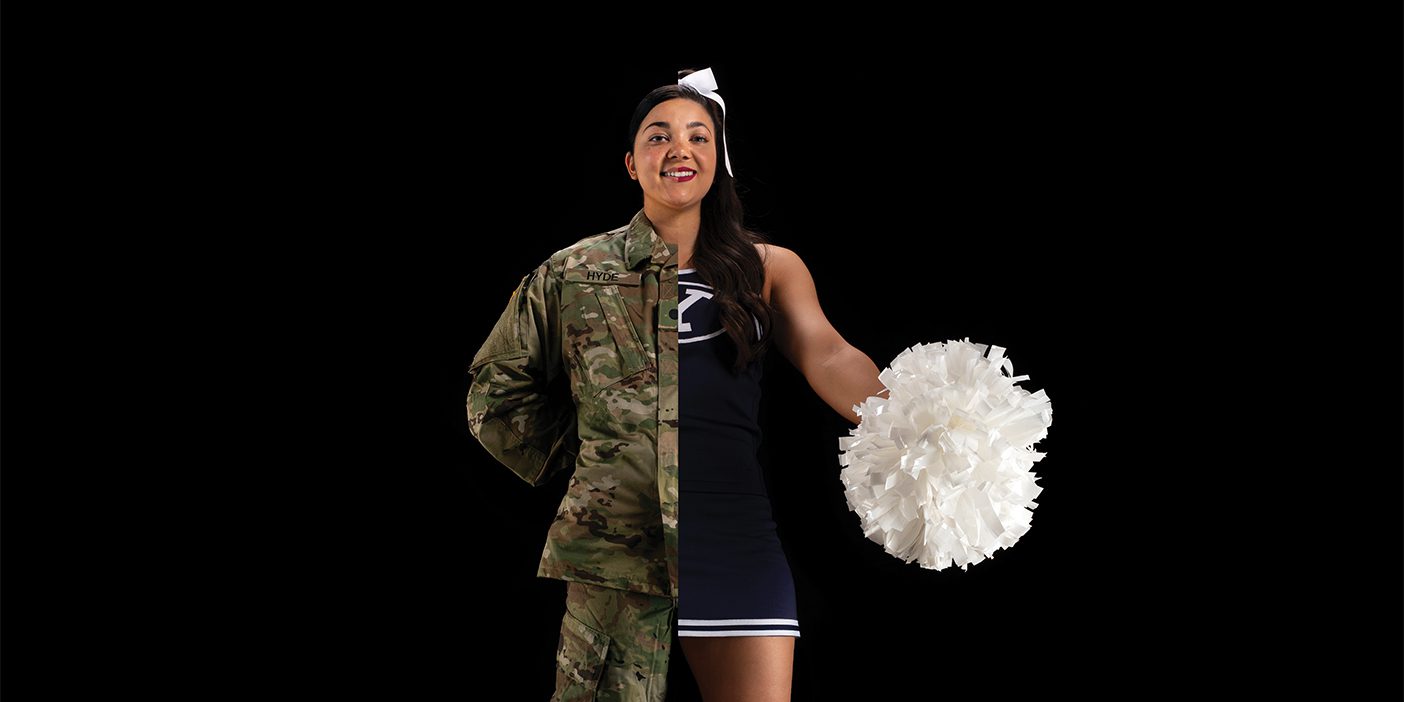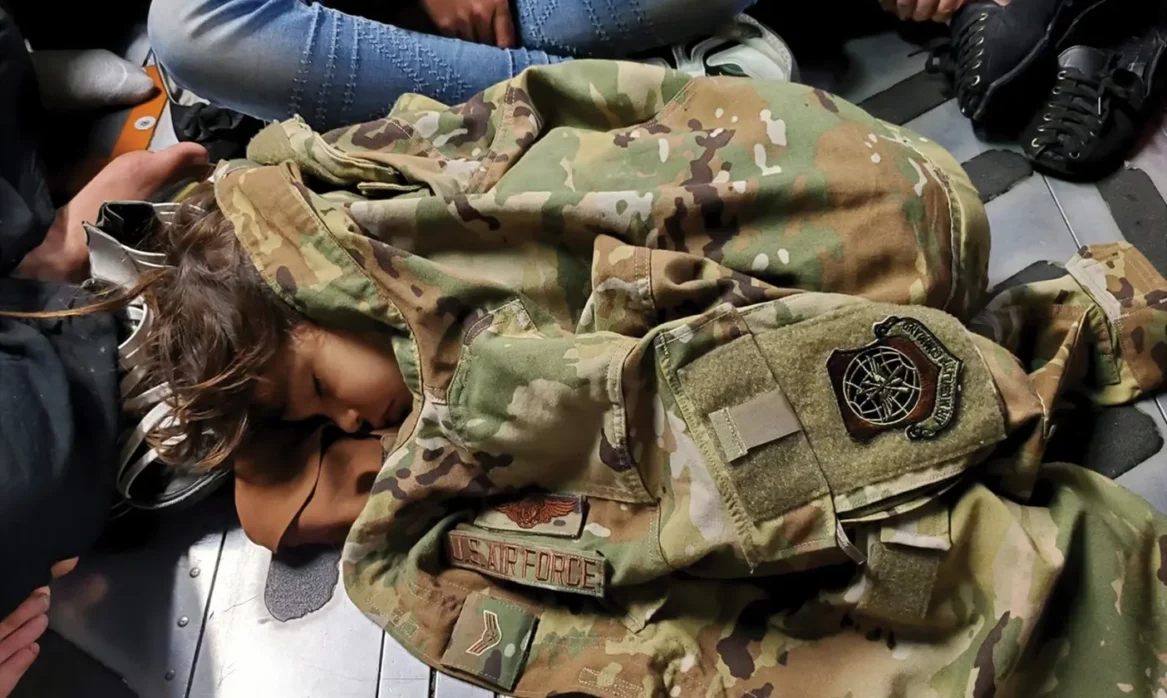A new partnership is improving fitness training for Air Force ROTC cadets.

On Tuesdays and Thursdays at 6 a.m., the Smith Fieldhouse comes to life as Air Force ROTC (AFROTC) cadets file in to train for their physical fitness assessment (PFA). Since fall 2024 these cadets have partnered with exercise science majors to increase their chances of earning a passing score.
Major Corban Smith arrived at BYU shortly after AFROTC leadership reached out to BYU’s Exercise Sciences Department about collaborating. They were “super excited and motivated to help us figure out a good way forward,” Smith says.
Exercise science professor Mandy Woolstenhulme Christensen (MS ’00, PhD ’05) helped develop the idea with the AFROTC. “The first challenge was just really figuring out what our roles would be,” she says. The workouts are run by cadets—how could interns help without taking over?
The solution, according to Smith, was that “the exercise science interns…would walk around and check for safety, check for compliance with proper form, and they’d make spot corrections where necessary to help our cadets save themselves from injury.” The interns also help plan the workouts and provide one-on-one coaching outside of training as needed.
Mandatory for upperclassmen heading into the Air Force or Space Force, the PFA requires a minute of push-ups and sit-ups each and a mile-and-a-half run. The more reps the student completes and the faster their mile time, the better their overall score—and the better their opportunities for competitive positions.
Although still new, the partnership has already proved effective. Smith estimates that the number of cadets failing their PFA dropped by as much as 25 percent, with the average overall score increasing as much as 5 percent.
Katelynn E. Hales (BS ’23), a grad student who helps oversee the internship, has witnessed the impact herself. “As you work with [the cadets] one-on-one, you see their progress. . . . It’s just really rewarding,” she says. Christensen has also seen how the partnership benefits the exercise science interns, citing an increase in confidence, leadership, and collaboration.
Smith has been impressed with the program’s results and is optimistic that it “will continue to improve and that it will continue to benefit our cadets.”
“Going out into a military setting, that’s one of the greatest services someone can give,” adds Hales. “If I can be a part of helping them be prepared for serving their country, serving other people, then yeah, I love that.”












